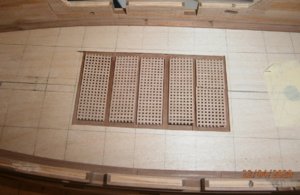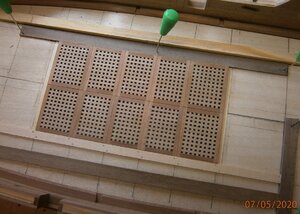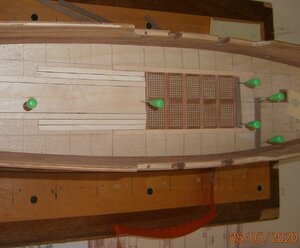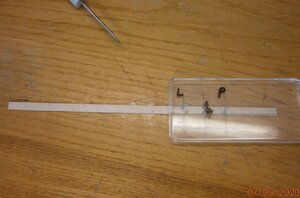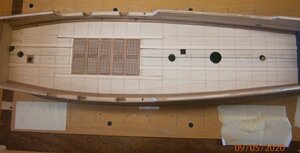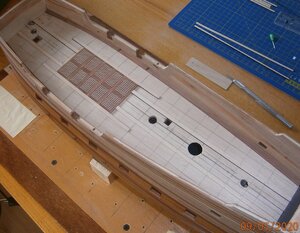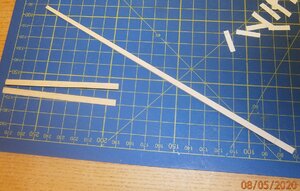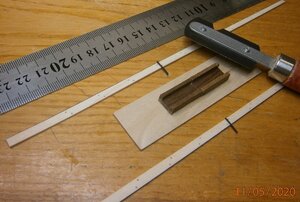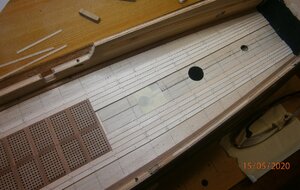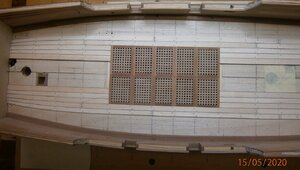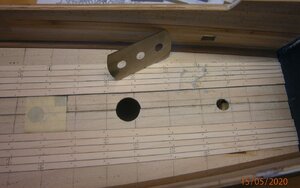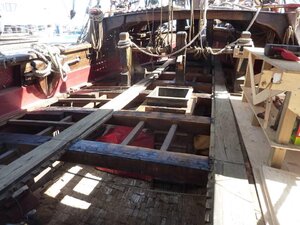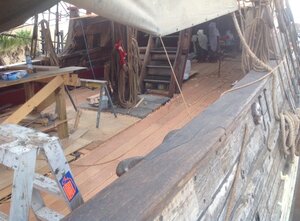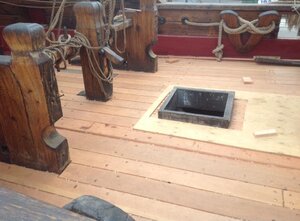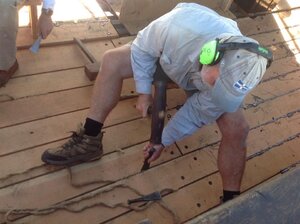-

Win a Free Custom Engraved Brass Coin!!!
As a way to introduce our brass coins to the community, we will raffle off a free coin during the month of August. Follow link ABOVE for instructions for entering.
-

PRE-ORDER SHIPS IN SCALE TODAY!
The beloved Ships in Scale Magazine is back and charting a new course for 2026!
Discover new skills, new techniques, and new inspirations in every issue.
NOTE THAT OUR FIRST ISSUE WILL BE JAN/FEB 2026
You are using an out of date browser. It may not display this or other websites correctly.
You should upgrade or use an alternative browser.
You should upgrade or use an alternative browser.
Roter Löwe 1597 by Ondras71 - scala 1/60
- Thread starter Ondras71
- Start date
- Watchers 85
-
- Tags
- galleon roter löwe
I wish I could stick to that saying instead of don't measure at all, cut hundred times.Thank you all.
I did not find a 1 mm saw blade at Proxxon. I got a saw blade from a friend, probably in the former DDR .. Its center is 16 mm, filled with ring 10/16. I was also afraid of this work, but everything can be learned. It is important to keep the saying, measure three times, cut once..
I wish I could stick to that saying instead of don't measure at all, cut hundred times.
Thank you Gennaro and eugen.t. Your words are valuable to me.Impressively clean and precise work

I created frames gratings for the main deck..

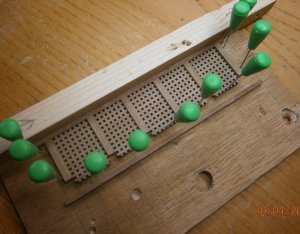
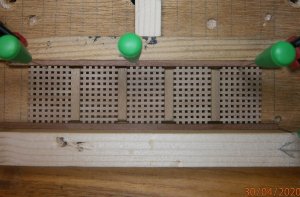
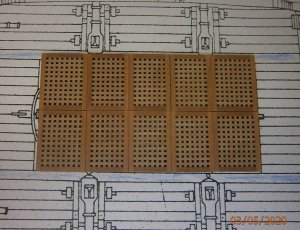
I'm starting to lay the deck. There are thicker "binding strake" boards around the gratings. I want to make these from wood contrasting with the deck. Here comes my first question for Ab Hoving, who offered me his advice: May I use the layout of strake boards on the main deck according to his reconstruction of the "WITSEN" pinase? The boards in question are the ones on the sides of the gratings and also the boards closer to the center of the deck around the masts and equipment.

Laying the planks of the main deck I will do according to the replica Duyfken ..
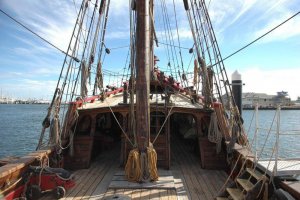
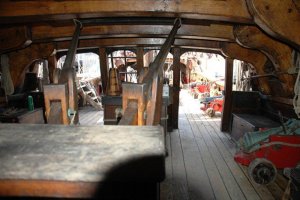

- Joined
- Jan 9, 2020
- Messages
- 10,569
- Points
- 938

Dear Ondras. The gratings look beautiful. If it helps, the Batavia has these thicker binding strakes on its deck as well - so has the Kolderstok model. They are just not of a contrasting wood but of the same wood as the rest of the deck. The other difference on the Batavia is that the binding strakes on either side of the grating run the full length of the deck.
Right on spot Ondras. The binding strakes have a constructional function: they support the ribs between the beams, together with the waterways.
Nice gratings! In Holland ribs with laths nailed onto them were used for gratings. Yours are a luxurious variant.
Was the Red Lion a warship or a merchant?
Nice gratings! In Holland ribs with laths nailed onto them were used for gratings. Yours are a luxurious variant.
Was the Red Lion a warship or a merchant?
Heinrich:
If wide gratings were used, the binding strakes were too wide for the other hatches in the deck. That’s why in some ships several binding strakes were used.
Remember: replicas are no historical sources. They are modern interpretations, no matter how well they were documented.
If wide gratings were used, the binding strakes were too wide for the other hatches in the deck. That’s why in some ships several binding strakes were used.
Remember: replicas are no historical sources. They are modern interpretations, no matter how well they were documented.
Somehow I have the idea that you know more than you suggest 
Right on spot Ondras. The binding strakes have a constructional function: they support the ribs between the beams, together with the waterways.
Nice gratings! In Holland ribs with laths nailed onto them were used for gratings. Yours are a luxurious variant.
Was the Red Lion a warship or a merchant?
Thank you so much Abe for the quick response. As I read, Roter Lowe was to be a guard ship in port. https://de.wikipedia.org/wiki/Roter_Löwe_(Schiff,_1597)
In that case your gratings should not protrude above the deck. That is to accommodate the guns. In merchants the gratings were laid into the coamings of the hatch.
Hello Heinrich. The binding strakes were made of hardwood, the other deck of soft..Dear Ondras. The gratings look beautiful. If it helps, the Batavia has these thicker binding strakes on its deck as well - so has the Kolderstok model. They are just not of a contrasting wood but of the same wood as the rest of the deck. The other difference on the Batavia is that the binding strakes on either side of the grating run the full length of the deck.
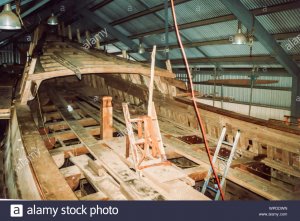
Here the different shade of the boards is clear ..
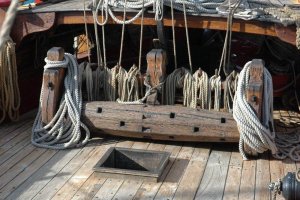
In that case your gratings should not protrude above the deck. That is to accommodate the guns. In merchants the gratings were laid into the coamings of the hatch.
Yes. The deck is as straight as a warship. Thank you

Somehow I have the idea that you know more than you suggest
If this sentence is directed at me Abe, thank you, but I still find new things in books and forums..

The sentence certainly applies to as well, but was directed to Heinrich.
By the way: not that it is of any importance, but in warships both the deck planks and the binding strakes and waterways were made of oak because of the ordnance on them. In merchants the planks were made of fir. That is: most of the time. We see strange things if we investigate shipwrecks. There were no strickt laws in shipbuilding, but there were habits. Most of the time the rules of thumb were used as a starting point, but the end decisions were always made by the shipbuilder and many times he found reasons to deviate.
But don’t let that disturb you in your building process. You are just building a model, not a real ship.
By the way: not that it is of any importance, but in warships both the deck planks and the binding strakes and waterways were made of oak because of the ordnance on them. In merchants the planks were made of fir. That is: most of the time. We see strange things if we investigate shipwrecks. There were no strickt laws in shipbuilding, but there were habits. Most of the time the rules of thumb were used as a starting point, but the end decisions were always made by the shipbuilder and many times he found reasons to deviate.
But don’t let that disturb you in your building process. You are just building a model, not a real ship.
Very good work on the deck planking. Interesting to see, that you are making the butt joints in the same way like @KUDIN - I have to give this method also a try !!!!I slowly continue to lay the planks of the deck. So far, whole boards without hooking..
View attachment 151485
View attachment 151477
View attachment 151478
View attachment 151479
View attachment 151476
Beautiful photos from the Duyfken deck exchange..
View attachment 151484
View attachment 151483
View attachment 151481
View attachment 151482
View attachment 151480
Very clean and accurate - this deck is getting a beauty
Hello Ondras ,your deck planking is looking great.
Superb work Ondras
Kind Regards
Nigel

Kind Regards
Nigel
Thank you very much Uwek, Zoly, NMBROOK..
The long strips as a whole guarantee more precise joints, especially when narrowing boards. In this activity I try to inspire the work of the Czech modeler Petr Šimek.
A beautiful model of the Derfflinger flute was created in his shipyard years ago.
The long strips as a whole guarantee more precise joints, especially when narrowing boards. In this activity I try to inspire the work of the Czech modeler Petr Šimek.
A beautiful model of the Derfflinger flute was created in his shipyard years ago.



